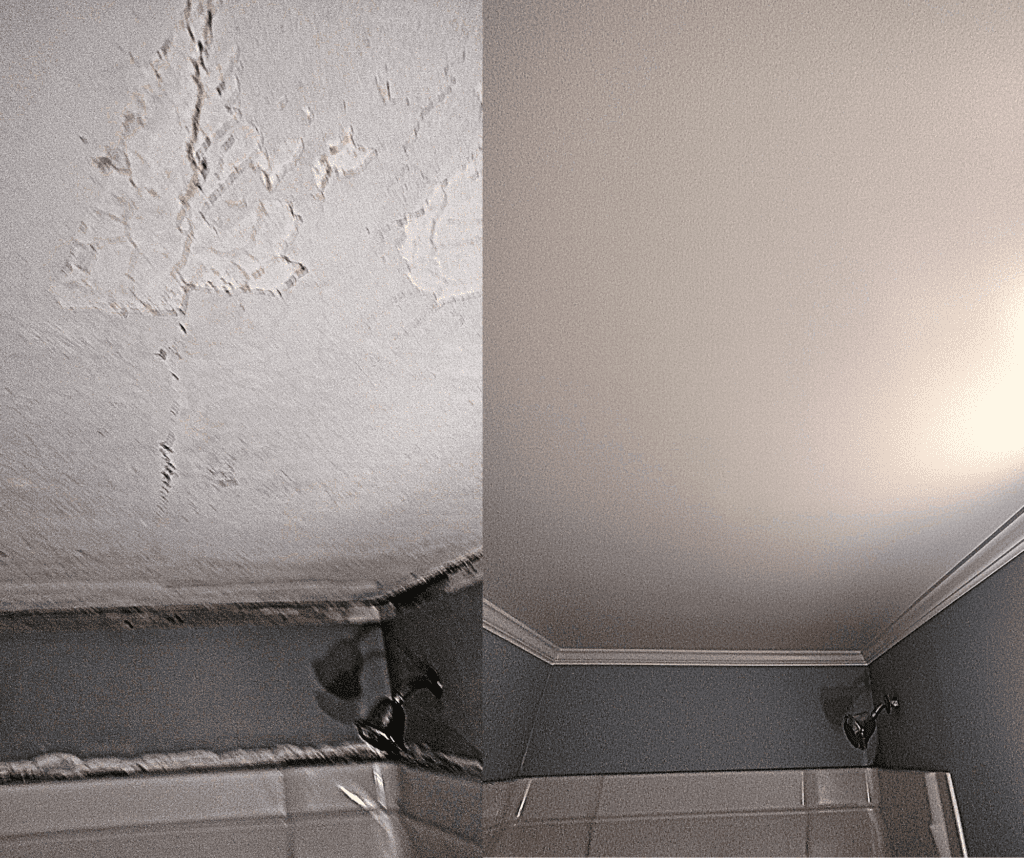Popcorn ceilings, once a popular choice in home design, have fallen out of favor due to their dated appearance and potential health concerns associated with asbestos in older installations. Fortunately, homeowners now have a variety of alternatives to achieve a fresh and modern look for their ceilings. In this blog, we’ll explore five alternatives to popcorn ceilings and discuss their respective pros and cons to help you make an informed decision for your home.
Smooth Ceilings: Clean, modern look
Smooth ceilings offer a sleek and contemporary aesthetic that can instantly modernize any space. By eliminating the textured surface of popcorn ceilings, smooth ceilings create a clean and uniform appearance that enhances the overall look of the room. Additionally, smooth ceilings are easier to clean and maintain compared to textured surfaces, making them a practical choice for busy households.
Pros:
- Clean and modern appearance
- Easy to clean and maintain
- Provides a versatile backdrop for various interior design styles
Cons:
- Requires skilled labor for installation
- May highlight imperfections in the ceiling surface
Wooden Planks: Warm, natural aesthetic
Wooden plank ceilings add warmth and character to a room with their natural textures and rich tones. Whether using traditional wood planks or engineered wood products, this alternative creates a cozy and inviting atmosphere that complements a variety of design styles, from rustic to contemporary. Additionally, wooden plank ceilings can be installed in various patterns, such as straight, diagonal, or herringbone, allowing for creative customization.
Pros:
- Adds warmth and natural beauty to the space
- Versatile installation patterns and finishes
- Durable and long-lasting
Cons:
- Higher cost compared to other alternatives
- Susceptible to expansion and contraction with changes in humidity
Tin Tiles: Vintage charm, easy installation
Tin ceiling tiles offer a touch of vintage charm and elegance to any room. Available in a variety of patterns and finishes, tin tiles can evoke different eras of design, from Victorian to Art Deco. Despite their intricate appearance, tin tiles are relatively easy to install and can be affixed directly to the existing ceiling with adhesive or nails. Additionally, tin tiles are durable and resistant to moisture, making them suitable for use in kitchens and bathrooms.
Pros:
- Adds vintage charm and character to the space
- Easy to install with basic tools
- Resistant to moisture and mold
Cons:
- Limited design options compared to other alternatives
- Can produce a metallic sound when touched or impacted
Textured Paint: Versatile, hides imperfections
Textured paint offers a cost-effective alternative to traditional popcorn ceilings while providing similar benefits in terms of hiding imperfections and minimizing sound transmission. With textured paint, homeowners can achieve various finishes, such as stippling, splattering, or sponging, to create visual interest and depth on the ceiling surface. Additionally, textured paint is relatively easy to apply and can be customized to suit individual preferences.
Pros:
- Hides imperfections in the ceiling surface
- Versatile finish options to match different design styles
- Cost-effective compared to other alternatives
Cons:
- May require multiple coats for desired texture
- Difficult to repair or touch up once applied
Stretch Fabrics: Acoustic benefits, customizable designs
Stretch fabric ceilings offer both aesthetic appeal and practical benefits, making them a popular choice for modern interiors. These ceilings consist of a lightweight fabric stretched over a frame to create a seamless and smooth surface. Beyond their visual appeal, stretch fabric ceilings also provide acoustic insulation, reducing sound reverberation and improving the overall acoustics of a room. Furthermore, stretch fabric ceilings come in a wide range of colors and can be printed with custom designs, allowing for endless creative possibilities.
Pros:
- Provides acoustic insulation and improves sound quality
- Customizable designs to suit any style or theme
- Conceals existing ceiling imperfections
Cons:
- Requires professional installation for best results
- Higher initial cost compared to other alternatives
Consider style, maintenance in decision-making.
When considering alternatives to popcorn ceilings, it’s essential to weigh the pros and cons of each option based on your personal preferences, budget, and maintenance requirements. Whether you opt for the clean lines of smooth ceilings, the warmth of wooden planks, the vintage charm of tin tiles, the versatility of textured paint, or the customizable designs of stretch fabrics, the key is to choose a solution that enhances the overall aesthetic of your space while meeting your practical needs. By carefully considering these factors, you can transform your ceiling into a focal point of style and sophistication in your home.

